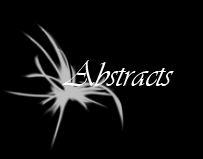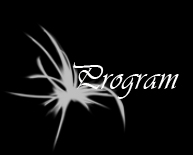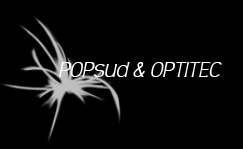




New Instrumentation
Concepts – Ground-based Optical Telescopes
Keith Taylor,
Departamento de Astronomia, IAG/USP, Brazil
Over the last decade
Brazil has gained entry into some of the world's largest telescopes
programs.
Instrumenting these telescopes is not only critical to the
advancement of
the science of observational astronomy but also to the development of
new, even
larger, facilities to which Brazil may aspire in the future.
The lecture
course is designed to
bring students
into line with the most recent developments in the
instrumentation of
large, ground-based telescopes so that they will be better positioned
to take
advantage of the growing opportunities in this field. The
mastering of
the science of astronomy while at the same time understanding the
technology on
which it rests is a key to advancement in this highly competitive
endevour.
We will begin by discussing basic principles involved in the
spectroscopy and
interferometry of faint light sources typified by astronomical
observations of
distant objects; how telescopes are efficiently coupled to instruments
in ways
which optimize the collection of information and how this information
is
combined in various ways to address questions of astrophysical
significance. These
fundamental principles will include discussions of information theory
as
applied to both seeing-limited and diffraction-limited observations and
signal-to-noise estimates.
We will then explore the basic technologies and techniques which are
current
today, including advances in optical systems (both spectroscopic and
interferometric) and technologies associated with the detection of
light.
This will include discussions of various types of diffraction
gratings,
interferometric techniques based on Fabry-Perots and Michelson
Interferometers
and, so called, hybrid techniques which are motivated by the trade
between
recording spectral and spatial information.
We will final touch on the development of instrumentation for adaptive
optics
techniques as applied to medium to large aperture telescopes looking
forward,
finally, to the emerging era of instrumentation for 30 to 40m class
telescope
where adaptive optics moves from be an option to an imperative.
Osvaldo N. Oliveira Jr.,
Instituto de Física de
São Carlos, USP, Brazil
Sensing has become ubiquitous in modern life, largely used in security screening, monitoring, diagnostics and in control systems that are pervasive in sophisticated equipment. Many are the materials used for sensing and equally large is the list of principles of detection.
In this short course I shall discuss the most used sensors for specific sectors, including the automobile industry and security of buildings. Such sensors are usually fabricated with inorganic materials, taking advantage of the well-developed technology of the semiconductor industry that allows for mass production with reduced costs. I shall also elaborate upon sensors produced with organic materials, which may be advantageous owing to the wide variety of properties that can be exploited and controlled for tailored applications.
Of particular relevance are the sensors and biosensors made with nanostructured films where the control of molecular architecture is possible with layer-by-layer deposition. After presenting the basic concepts for film fabrication and the electrical and optical techniques used for detection, a number of examples will be provided to illustrate the capabilities of organic materials. The first example will be the so-called electronic tongues, which are sensor arrays based on impedance spectroscopy capable of distinguishing complex liquids, such as wines and coffee samples, and detecting trace amounts of impurities in waters. Using machine learning methods, it is also possible to correlate the impedance measurements with the grades assigned by professional tasters, as in an experiment with coffee samples.
The concept of global
selectivity
inherent in the electronic tongues can be extended by using sensing
units
incorporating biomolecules with molecular recognition ability. This is
the case
of biosensors produced with immobilized antigens used to detect
antibodies of
specific diseases. Examples will be given of highly-sensitive
biosensors used
to detect tropical diseases. Because the film-forming methods allow
incorporation of inorganic materials, hybrid films have been obtained
where
polymers and biomolecules are combined with metallic nanoparticles and
carbon
nanotubes. These hybrid nanostructures normally lead to enhanced
performance in
sensing and biosensing. Significantly, they can also be integrated in
field-effect devices, thus permitting integration of organic films and
silicon
technology. The course will finish with the introduction of information
visualization concepts that have been recently employed in treating
large
amounts of data of sensors and biosensors, with unprecedented
elimination of
cross talk effects.
Multispectral Imagery
and astronomical
developments: data reconstruction, source separation, anomaly
detection, and
identification
Mireille Guillaume
Centrale Marseille/Institut
Fresnel, Marseille, France
Multivariate analysis
has been shown to be able
to greatly improve the performances of imagery applications, such as
detection
and classification. Moreover, hyperspectral data allow material
identification,
by exploiting the reflectance spectrum of pure materials constituting
the
observed objects, even in presence of mixtures. Most of the
astronomical
missions include spectroscopic mode in the data acquisition process. We
propose
to give some basis to extract information from multi and hyper spectral
data.
Supervised detection is treated for
multispectral and hyperspectral data, with a specific approach of each
case,
while unsupervised detection, which is known as anomaly detection, is
in the
context of hyperspectral data.
The expected results are given, with
constraints and limitations.
Brice Le Roux,
Observatoire Astronomique de
Marseille-Provence, LAM, France
We begin by presenting
the full process of
image formation, from the atmospheric distortion of the wave front to
the
telescope focus image formation. We expose in that chapter the
atmosphere
physics and the optical consequences on the light propagation. We
present the
spatial and temporal statistics of the wave front and the consequences
on the
image quality.
We propose a historical
panorama of the
solutions that were found to that problem from speckle analysis to
adaptive
optics.
The second chapter
presents the components of
adaptive optics systems and their limitations. Different type of wave
front
sensors, deformable mirrors and real time computers are described and
compared.
In that chapter, we also present the control loop optimisation
strategies in
classical adaptive optics. From the intuitive integrator to the optimal
Linear
Quadratic Gaussian control. Finally, this chapter ends with the
description of
an error budget for adaptive optics and presentation of the main
limitations of
such a system.
A third chapter is
dedicated to the
presentation of next generation adaptive optics systems. We explain the
astronomical objectives in terms of angular resolution or field of view
that
make it necessary to improve the adaptive optics performances. We
describe the
wide field of view adaptive optics concepts (GLAO, LTAO, MCAO and MOAO)
and the
extreme adaptive optics systems. In each case, we detail the
constraints and
specificities in terms of technology and control algorithm. We present
each
time an example of a real project implying such a system. We end the
chapter by
a section dedicated to the characteristics and specific constraints of
adaptive
optics for an Extremely Large Telescope, in terms of technology and
control
law.
Finally, the
applications of adaptive optics in
other academic or industrial fields are presented. We detail each time
the
specific constraints of particular applications and the technical
solutions.